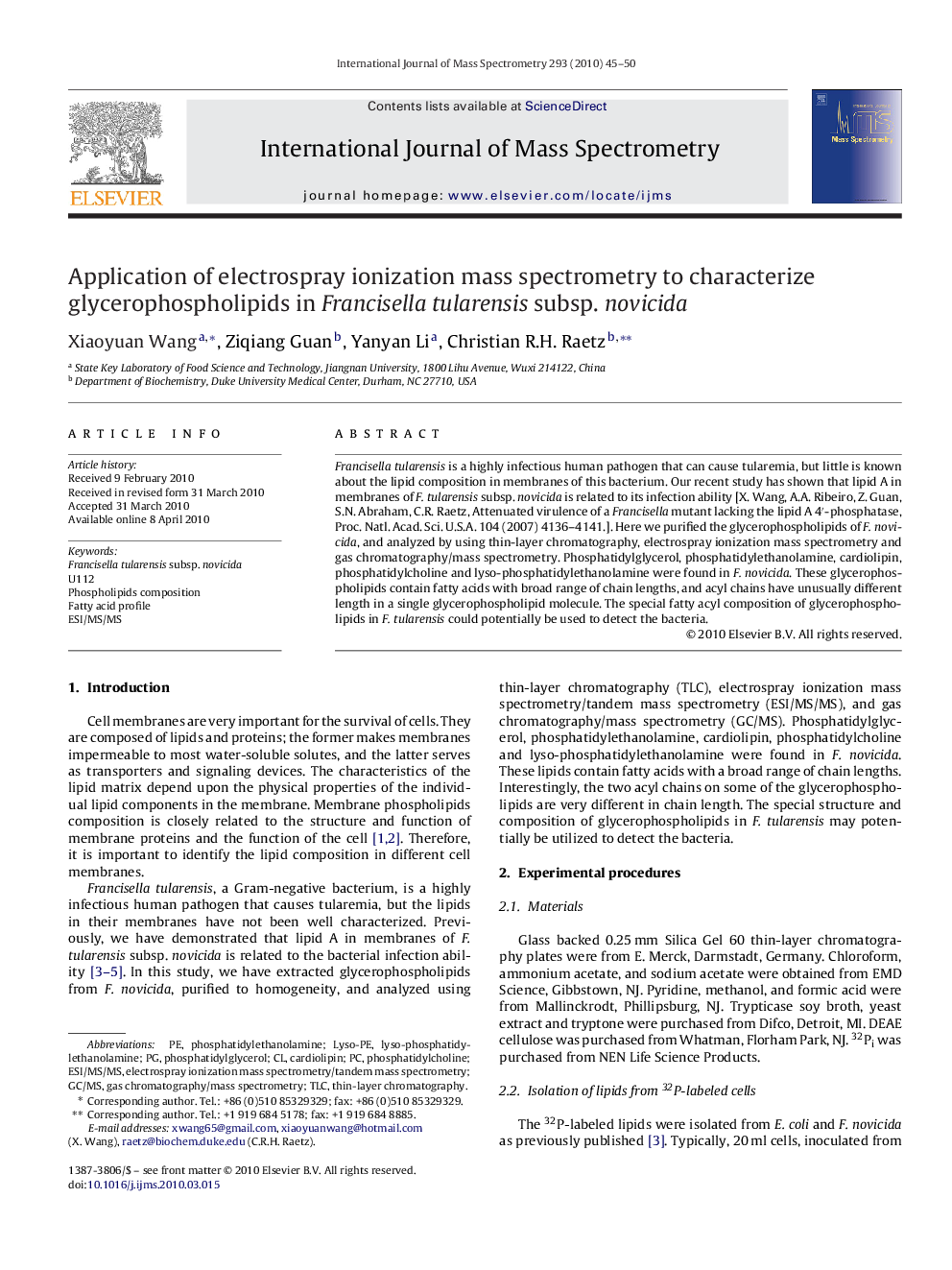| Article ID | Journal | Published Year | Pages | File Type |
|---|---|---|---|---|
| 1194533 | International Journal of Mass Spectrometry | 2010 | 6 Pages |
Francisella tularensis is a highly infectious human pathogen that can cause tularemia, but little is known about the lipid composition in membranes of this bacterium. Our recent study has shown that lipid A in membranes of F. tularensis subsp. novicida is related to its infection ability [X. Wang, A.A. Ribeiro, Z. Guan, S.N. Abraham, C.R. Raetz, Attenuated virulence of a Francisella mutant lacking the lipid A 4′-phosphatase, Proc. Natl. Acad. Sci. U.S.A. 104 (2007) 4136–4141.]. Here we purified the glycerophospholipids of F. novicida, and analyzed by using thin-layer chromatography, electrospray ionization mass spectrometry and gas chromatography/mass spectrometry. Phosphatidylglycerol, phosphatidylethanolamine, cardiolipin, phosphatidylcholine and lyso-phosphatidylethanolamine were found in F. novicida. These glycerophospholipids contain fatty acids with broad range of chain lengths, and acyl chains have unusually different length in a single glycerophospholipid molecule. The special fatty acyl composition of glycerophospholipids in F. tularensis could potentially be used to detect the bacteria.
Graphical abstractGlycerophospholipids extracted from E. coli and Francisella novicida were characterized by thin-layer chromatography (TLC) (A) and electrospray ionization mass spectrometry. Seven lipid species were identified in F. novicida.Figure optionsDownload full-size imageDownload high-quality image (47 K)Download as PowerPoint slide
